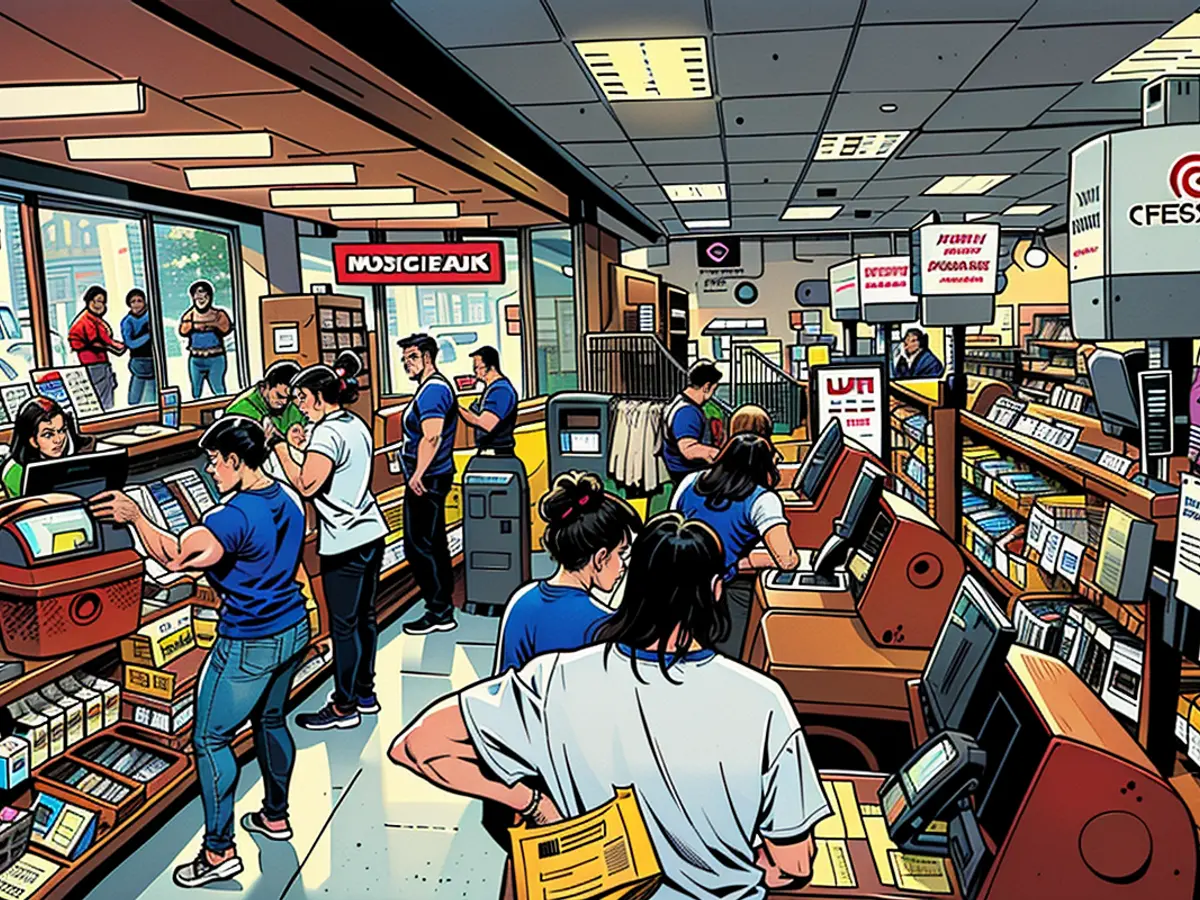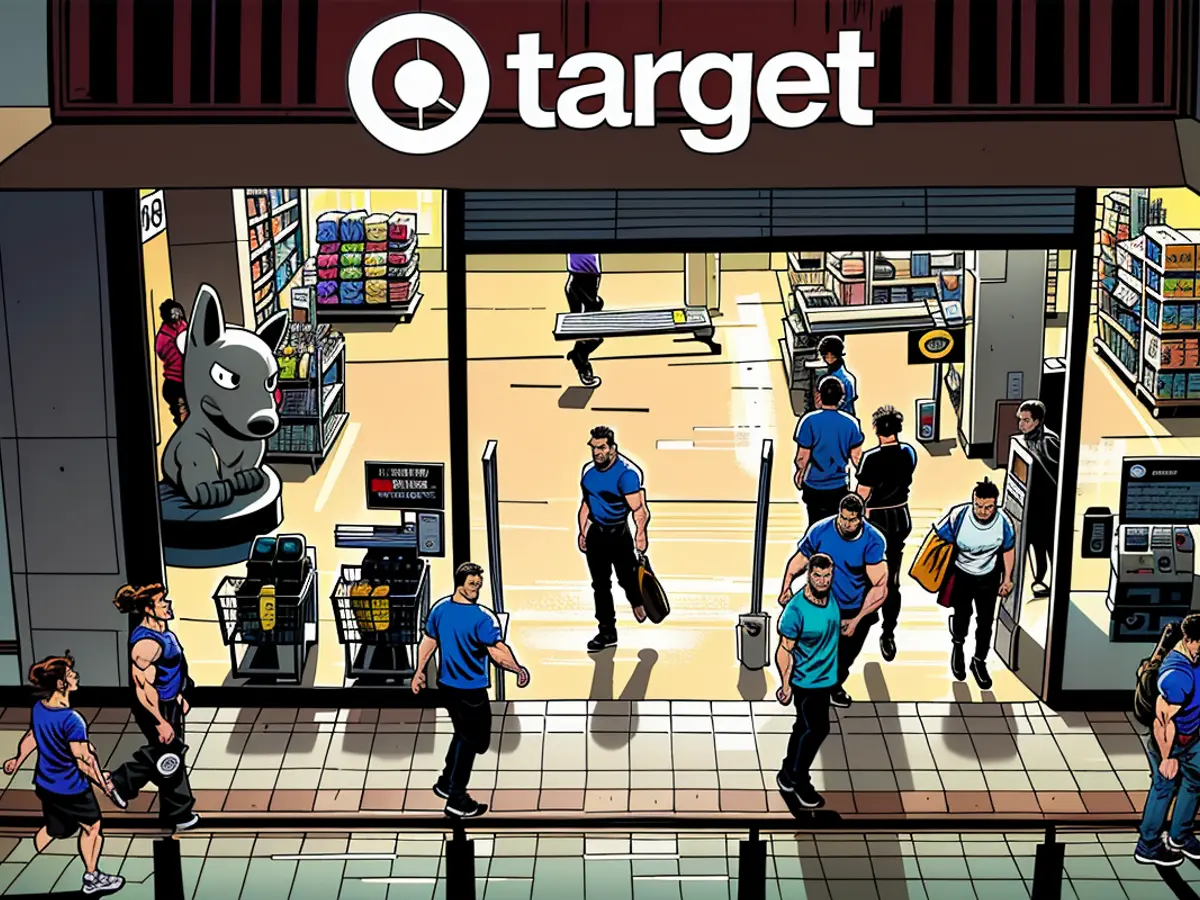U.S. Retail Outlets Are Triumphing in the Battle Against Shop Lifting
This year, merchants are spinning a distinct narrative or staying silent about it. It seems like the shoplifting predicament mysteriously disappeared.
Let's consider Target as an example.
In the previous year, Target acknowledged a plague of petty theft and organized groups pillaging merchandise, resulting in a significant loss of over $500 million in profits. Furthermore, Target closed nine stores, citing "theft and organized retail crime" as a threat to worker and customer safety, and making the business unsustainable.
However, Target has now adopted a different tune as they navigate better with lost merchandise, a phenomenon commonly referred to as shrink. Although shrink and theft often go hand in hand, shrink also encompasses losses due to employee theft, damaged or spoiled products, administrative errors, vendor fraud, and other factors.
On a call with analysts last month, Target's COO Michael Fiddelke expressed optimism, stating, "We're ahead of where we expected to be in terms of progress on shrink."
Similarly, other retailers have shifted their stance. Many retailers' merchandise losses have stabilized or improved, and chains have publicly toned down their rhetoric. Mentions of "shrink" during companies' earnings calls dropped by 20% during the first two quarters of 2024 compared to the same period the previous year, according to an analysis by FactSet.
Shrink has improved primarily due to a more accurate accounting of merchandise by the retailers. Initially, retailers may have underestimated their losses, leading to overestimation in some instances.
To combat theft, stores have implemented measures such as securing products and removing self-checkout stations. These measures could have been effective in reducing theft, despite potentially frustrating shoppers.
Retailers have also received assistance from various local and state governments that have allocated additional resources and enacted legislation to combat theft and organized crime. For instance, in California, Governor Gavin Newsom recently signed legislation to implement stricter penalties for retail theft, including longer sentences for large-scale theft rings and lower thresholds for felony theft charges.
Michael Baker, a retail analyst at DA Davidson, observed, "Retailers talked about it a lot more, and that brought attention to the problem. It worked a little."
Controversial Topic
The shift in retailers' messages about shrink indicates that their initiatives are yielding results. However, it also raises questions about the severity of the shoplifting issue initially.
Shoplifting garnered significant political attention following the pandemic in 2020, with videos of thieves causing chaos in stores going viral on news and social media. Stores took drastic measures to secure items like toothpaste and deodorant. Former President Donald Trump suggested that shoplifters should be shot, and lawmakers from both parties pledged to address the issue.
However, the notion of a nationwide surge in shoplifting has largely been unproven. In truth, retail crime has not seen a significant increase nationwide in recent years and has even decreased in some areas.
Some retail analysts have speculated that retailers may have exaggerated the impact of shrink and theft to conceal other problems. In 2021, William Blair analysts suggested that companies may have "overexaggerated" the impact, using it as a scapegoat for inventory mismanagement and strategic mistakes. Walgreens' former CFO James Kehoe admitted last year that the company may have overreacted, stating, "Maybe we cried too much" about theft and other losses.
Neil Saunders, a retail analyst at GlobalData, remarked to CNN, "It suggests that some of the alarm bells that sounded last year were false alarms. That's not to say that there wasn't an issue, just that the magnitude was exaggerated a little."
Complex Measurement
The term "shrink" is used not just for theft but also for other losses. Retailers cannot pinpoint the exact cause of every missing item, so they calculate their shrink rate as a percentage of their sales to make an estimate.

Their shrink rate is the difference between the products they have physically in stores and warehouses during an inventory check and what they purchased. Customer and employee theft account for approximately two-thirds of shrink losses, retailers estimate, with additional losses from damaged or spoiled products, administrative errors, vendor fraud, and other factors.
Companies determine their shrink rate by conducting physical inventories, usually once or twice a year, according to the National Retail Federation, an industry trade group.
Shrink dropped in 2020 as stores closed during the pandemic and online shopping surged.
When stores reopened, retailers underestimated their shrink rate, leading to increased estimates when they took physical inventories in 2022. This, in turn, resulted in larger losses to profit.
The average shrink rate for retailers in 2022 was 1.6%, up from 1.4% in 2021. Although this rate was consistent with pre-pandemic levels, data for 2023 and 2024 has not been released yet by the National Retail Federation.
Reducing shrink: Many retailers have less inventory than they did in 2022 and 2023, when they stockpiled merchandise to meet consumer demand.
Total inventory levels, excluding autos, declined by 1.3% in June, marking the 14th consecutive month of annual decreases, according to the latest data from the Census Bureau.
Baker explained, "If you have less inventory, you have less shrink."
While retail shrinkage has decreased, organized retail crime hasn't vanished, David Johnston, the vice president of asset protection and retail operations at the National Retail Federation, told CNN. He emphasized that shrinkage is just one aspect, and it overlooks other theft-related concerns such as employee and customer safety fears, physical store damage, and negative perceptions towards store safety.
Theft and loss continue to be an issue, even if shrinkage is stabilizing, he pointed out. The shoplifting rate during the first half of 2024 in major cities was 24% higher, on average, compared to the same period last year, according to a recent study by the Council on Criminal Justice. The first half of 2024 also showed a 10% increase in shoplifting rates compared to the first half of 2019.
However, Ernesto Lopez, a senior research specialist at the Council on Criminal Justice and co-author of the report, warned that the increase might be due to either a rise in actual shoplifting incidents or an increase in businesses reporting incidents to law enforcement.
Retailers have taken various measures to combat theft and minimize losses, such as securing items inside glass cases, removing self-checkout stations, and even equipping employees with body-worn cameras in certain instances.
Consumers express frustration towards locked product displays, noted Edgar Dworsky, a consumer lawyer and founder of Consumer World. He explained that people don't want to interrupt store staff when they want to buy a locked product. Comparing items and reading labels in different cases is also more challenging. An online survey of over 1,000 Consumer World readers revealed that 55% opt to purchase a product elsewhere when the desired item is locked up.
Retailers collaborate more closely with law enforcement and allocate more internal resources to combat and investigate theft. A Home Depot spokesperson informed CNN that they have witnessed improvements in addressing the rising issue of organized retail crime. Even though the criminal activity's environment remains unimproved, they are witnessing progress with their security measures.
Ulta Beauty reported that its shrink rate remains the same as last year. At their latest earnings call, they mentioned installing new fixtures to deter small fragrance thefts and lowering losses.
In Johnston's words, retailers have added additional security layers to lessen theft over the past year and a half.
In response to the significant loss of over $500 million due to shoplifting in the previous year, Target implemented measures to combat theft and improve their shrink rate. This includes securing products, removing self-checkout stations, and collaborating with law enforcement.
Despite the improvement in shrink rates and stability in merchandise losses for many retailers, organized retail crime continues to be a concern. The shoplifting rate during the first half of 2024 in major cities was 24% higher, on average, compared to the same period last year, according to a recent study by the Council on Criminal Justice.









